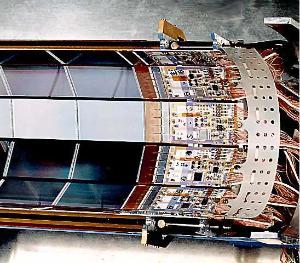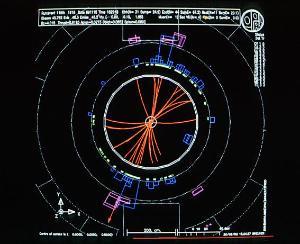OPAL at QMUL

The OPAL Experiment was at the CERN Electron-Positron Collider, LEP This experiment provided a comprehensive detector at one of the four interaction points around the 27 km circumference of the underground accelerator. The complete detector has many sub-components each designed and constructed for a particular physics need; particle tracking, identification or energy measurement are examples.
People
Academic Staff
Prof Steve L Lloyd
Dr Alex J Martin
Emeritus Staff
(Figures on this page: OPAL Silicon Microvertex detector showing one half cylinder of the two layer detector and an online event display showing typical Z decay in OPAL.)
Activity
The Queen Mary group contributed towards many aspects of the design, instrumentation and preparation for the physics experiments. The Group has particular expertise in instrumentation for charged particle tracking, electromagnetic energy measurement and event triggering. Queen Mary Group members have been principal authors of several publications concerning heavy quark physics, and their expertise in secondary vertex tagging was central to studies at the increased energy of LEP 200.
The original OPAL detector was upgraded by the addition of a silicon microstrip tracking device, whose development was spearheaded by Queen Mary physicists, capable of detecting the position of a particle to a precision of a few microns.
The OPAL experiment and the LEP collider started operation in 1989. Data taking finally ended on November 2, 2000. The physics analysis of OPAL data continues to this day to probe the understanding of forces of nature and to search for new phenomena.
